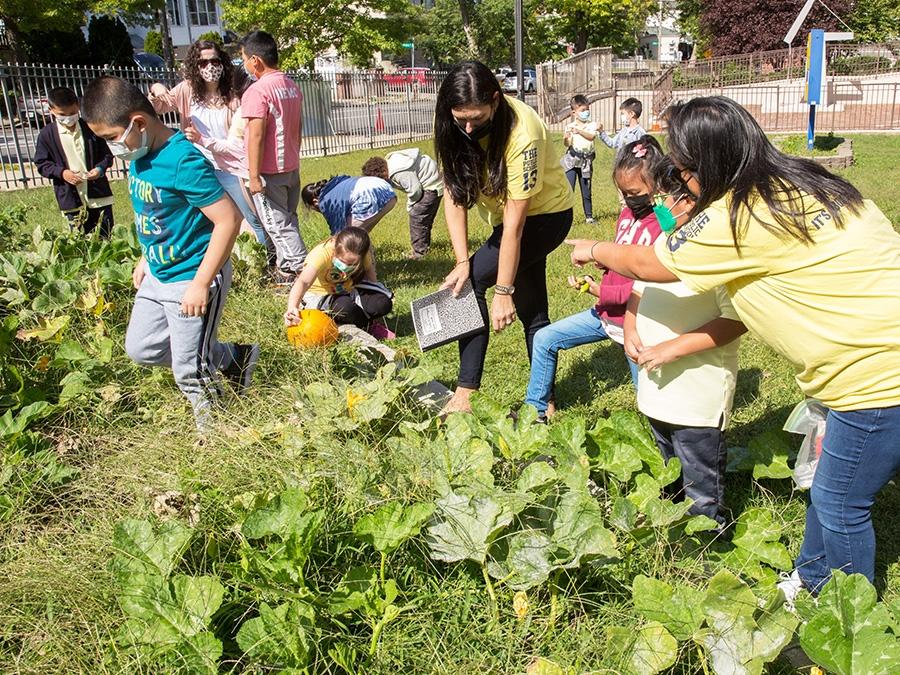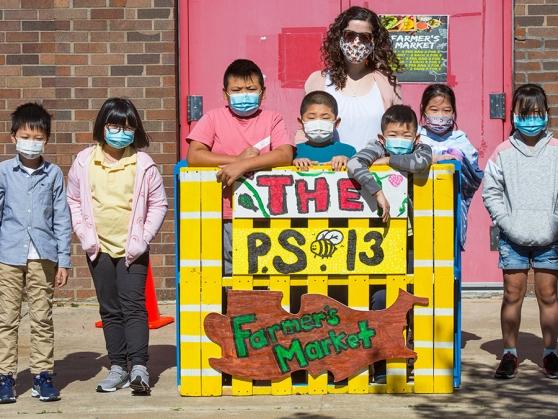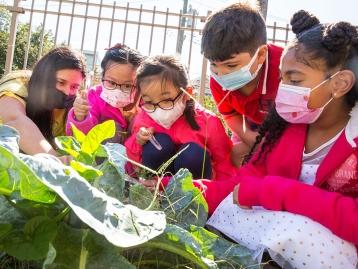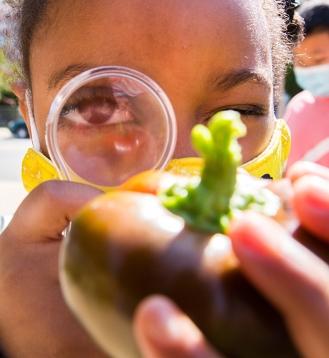A place to veg out

Students and teachers (from left) Vjolca Mehmeti and UFT co-Chapter Leaders Michele Lomangino and Szeyen Soto explore the pumpkin patch, the newest addition to the garden at PS 13 on Staten Island.

Mehmeti, the science teacher and sustainability coordinator, joins some of her budding gardeners at the Farmer’s Market stand, where neighbors of the Rosebank school
can purchase the fruits of the students’ labor.
Jayden had never seen an eggplant until he picked one from the vegetable garden at PS 13 on Staten Island one September morning. “That’s a big boy!” the 4th-grader exclaimed as he held the large specimen.
Eggplant — purple and white — is among the produce grown by students under the guidance of science teacher Vjolca Mehmeti. Five raised beds on the school’s grounds overflow with a colorful mix of spinach, white and purple cauliflower, cabbage, kale, hot peppers, tomatoes, beets, pumpkins and eggplant.
The garden ties into the science curriculum’s unit on plants, and it teaches students to count and plan and measure. But it also provides respite from pandemic challenges; it’s a place where students and staff can get some sun, fresh air and a boost to their social and emotional well-being. A meditation garden, complete with decorative mosaics and a small pond with fish, is used by staff for outdoor breaks and lunch during these difficult times.
The garden “started out as an authentic task, as project-based learning,” said Szeyen Soto, the school’s UFT co-chapter leader, “and then it just exploded into this giant thing. Our students reap so many benefits in terms of confidence, self-esteem and an enhanced perception of their abilities.”
The garden is a great responsibility, Soto said, and students learn coping skills and perseverance when they encounter a challenge.
The produce they grow can be purchased by neighbors at a farmers market organized by the school. Students set up, take inventory, sell the vegetables and even issue receipts. The earnings fund plants and seeds for the next growing season. Leftovers are donated locally.
Artemis, a 2nd-grader, learned “you can make delicious food, like a salad” out of the bounty.
Co-Chapter Leader Michele Lomangino handed out magnifying glasses to the students that morning and gave them marching orders: “Walk around and observe what is growing,” she said.
The 2nd-graders exploring the garden “were 1st-graders when they helped me put these in,” Mehmeti said, pointing to tomato plants. “I showed them the first one and then, with the meter stick, I pointed out how far apart they should be.”
Many students’ parents are gardeners, “so it’s a nice connection for them,” Mehmeti said. One boy described gardening as a big part of his Asian culture, and Mehmeti understood; her parents were raised on farms in Yugoslavia and give her tips she shares with the fledgling gardeners.
“When we come to a new place, we hopefully bring that with us,” she said, “and we can teach others.”

